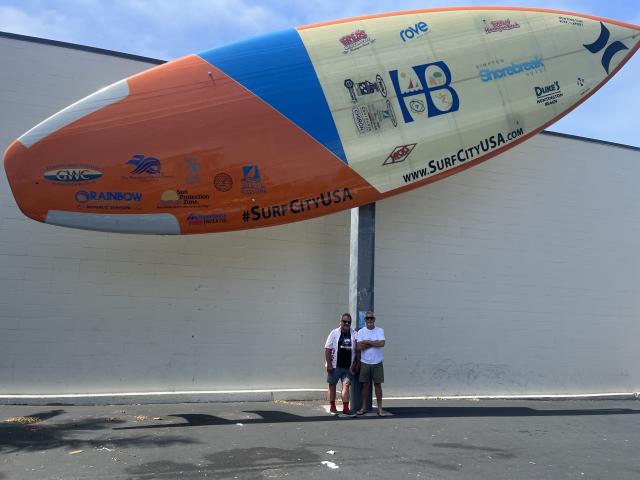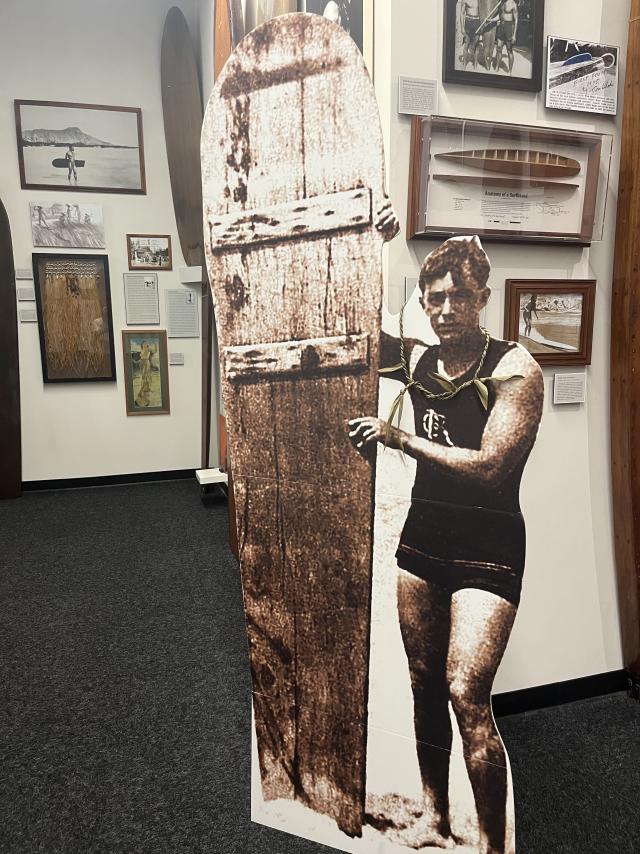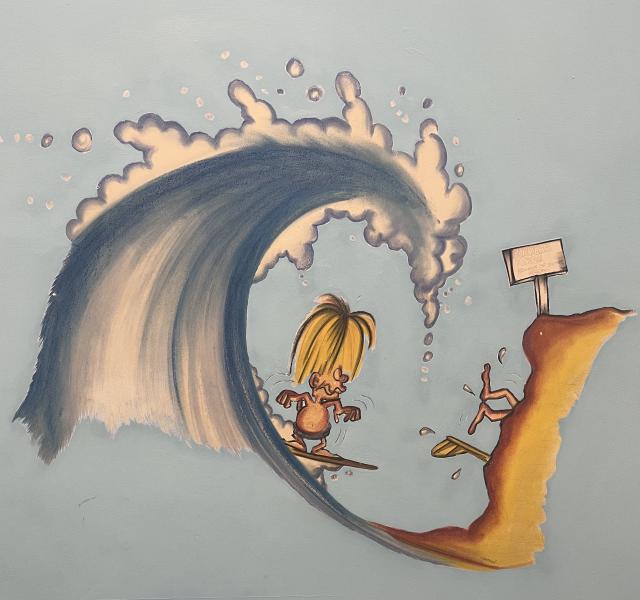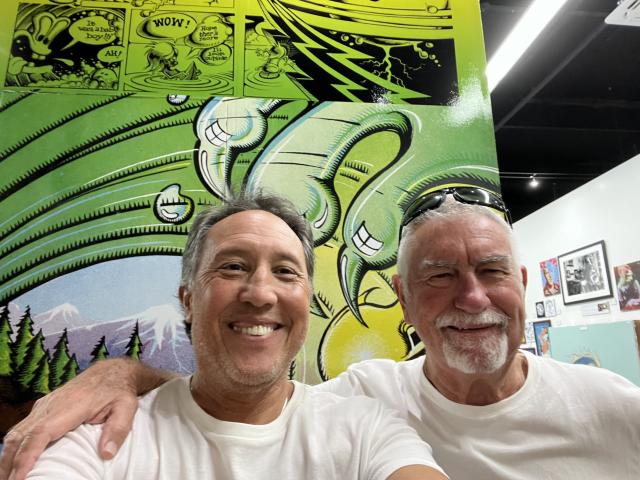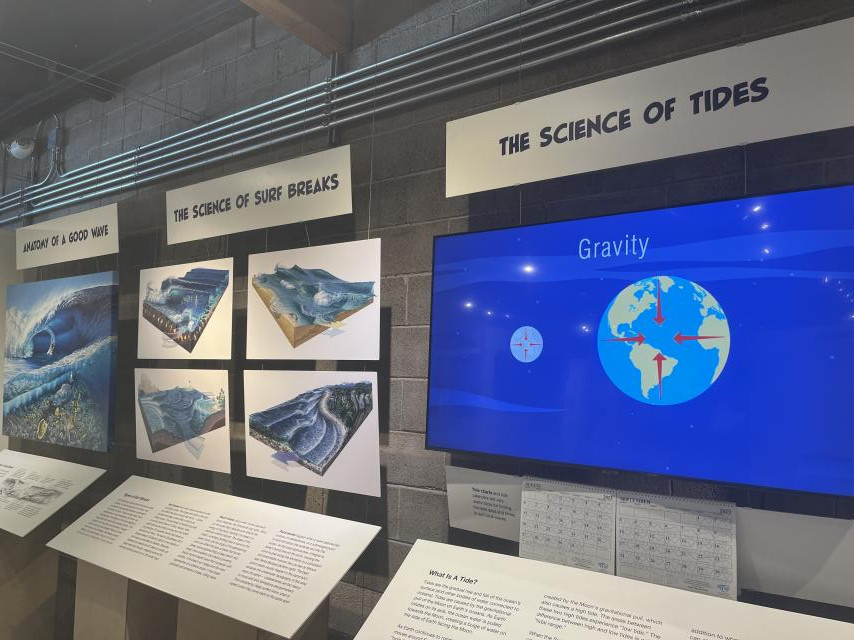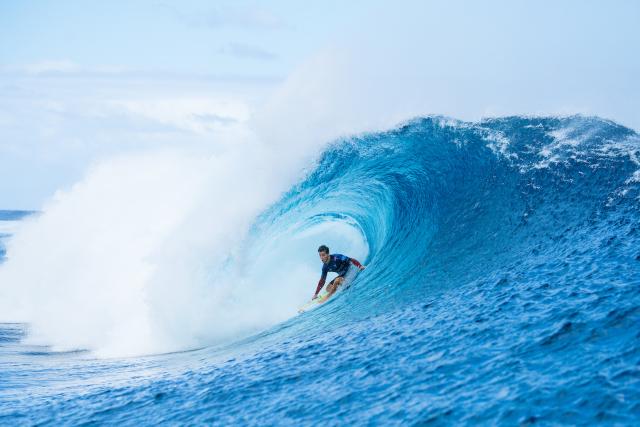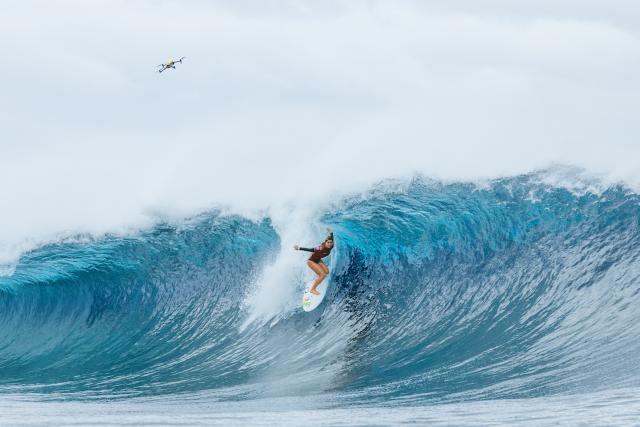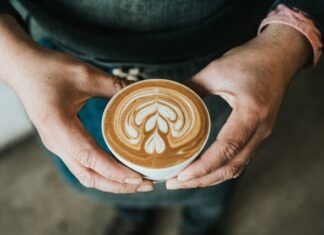There being no surf to speak of last week, I decided to do the Southern California surf museum run.
These are places I’ve been to many times before, and where I’ve launched several books, but it’s always good to catch up with the mates who run them, check out what’s changed over the Covid years and look at surf museums with fresh eyes, since I’ve been helping out a bit with the curation of the Noosa Surf Museum.
We started off at the Huntington Beach International Surf Museum, just up the street from the famous pier, where my old surf buddy, 1976 IPS world champion and longtime HB resident Peter Townend has been president for as long as anyone can remember. It’s a little museum with a big heart (a bit like PT) and an even bigger surfboard suspended above the car park. The HB museum features a small collection of classic boards that tack the development of surfing along the California coast, and an equally impressive collection of California surf art. Ahead of a great brunch at the Shore Break, we spent an hour or so lost in history.
San Clemente’s Surf Heritage and Culture Center is somewhat hidden away in the light industrial lots in the hills above town, but it’s well worth tracking it down. SHACC, sometimes called the Smithsonian of surfing, features the world’s largest collection of surfboards and memorabilia – or it did until Noosa came along with about 200 boards more – housed in a huge building divided about equally into storage and exhibition space. Only about 10 per cent of the surfboard collection, which includes such classics as Duke Kahanamoku originals and early Waimea guns, is displayed at any one time, and on this occasion I found a few exhibited that I don’t remember seeing before.
Equally fascinating are the memorabilia exhibits, such as Bruce Brown’s Endless Summer collection, which includes the editing suite on which he made his landmark surf film in 1962, and his original tripod and camera. This exhibit has travelled around the US and has featured in shows in Washington DC and New York.
Curator Barry Haun and I have worked together on history projects over many years, and it was great to see him back at full steam at SHACC after going part-time over the pandemic.
Finally, down to Oceanside and the California Surf Museum, where the president is Jim Kempton who was my editor when I was a contributing editor on Surfer Magazine in the late 1970s. Somehow, just like the old days and our dashes down to Baja for surf, tacos and tequila shots, we managed to turn a museum visit into two entertaining lunches at tables overlooking the Pacific.
Again, CSM is not big, but its space is put to good use through some brilliant curating, combining key historic surfboards, fascinating memorabilia and an educative corner like I’ve never seen before. If you knew nothing about surfing as you walked in – and a high percentage of CSM’s 25,000 annual visitors are in that category – you could walk out fully briefed, from how a wave is created to how surfboard design and body weight distribution enable them to be ridden, and it’s all entertaining.
The storytelling in the exhibits is also world class. Two examples: In 1925 Duke Kahanamoku used his finless redwood surfboard called Makua to save the lives of eight people after a fishing trawler capsized off Corona del Mar – here it is, the board, the trunks he wore, the news clippings, the original photos.
In 2003 Bethany Hamilton, a rising junior star from Hanalei Bay, Kauai, was attacked by a tiger shark while surfing her home break. Beth lost an arm and nearly died from loss of blood, but she was back in the water three weeks later, and is an inspirational icon for handicapped surfers the world over today.
Hanalei resident and ‘60s surf star Billy Hamilton (no relation) was sure the attack was the work of a rogue tiger that had been harassing surfers for months, so Bill and his fishing buddy Ralph went out and caught and killed it, identifying it against the tooth marks on Beth’s board. There it is – what’s left of the board, the shark, Beth, the whole damn show. History comes to life.
That’s what museums are all about.
Jack be nimble, Jack be quick
And wasn’t he! Margaret River’s Jack Robinson was on point throughout the WSL season closer at Teahupoo, Tahiti, even if the surf sometimes wasn’t.
It wasn’t vintage Chopes, that’s for sure, but it had enough grunt for two days for the best tube riders and strategists on the planet to shine. The new Gabe Medina, having had his personality bypass reversed, charmed everyone in his post-heat interviews and baffled competitors with his uncanny ability to thread a line through closeout barrels, only to be brought down in the final by an all-in Jack Robbo.
Exciting stuff, which sees our Jack scrape into next month’s finals at Trestles and gain Olympic selection for next year.
In the women’s, Caroline Marks was strong throughout, cracking the finals five in front of our Molly Picklum and ending Steph Gilmore’s outside chances of gaining another world title.

